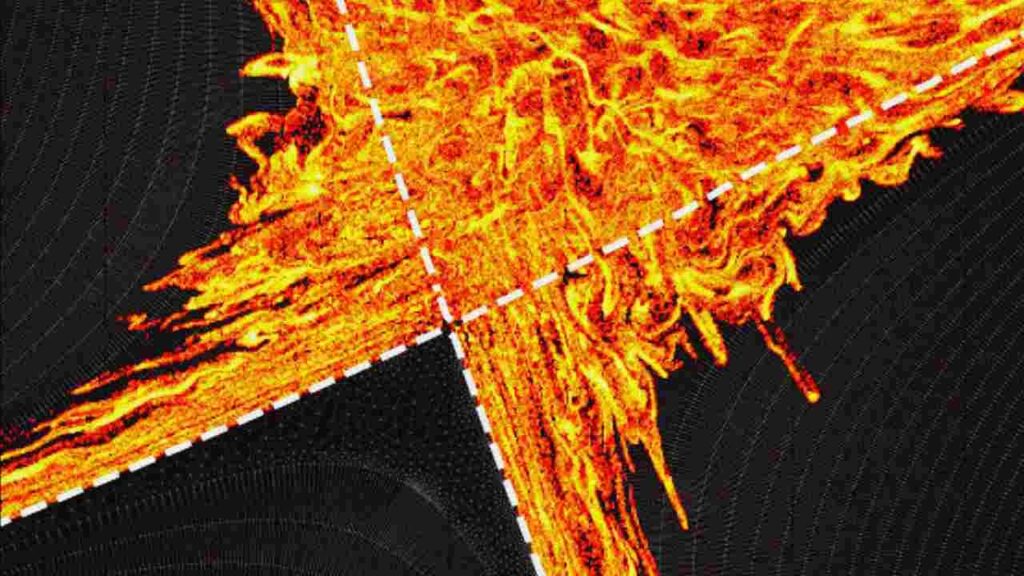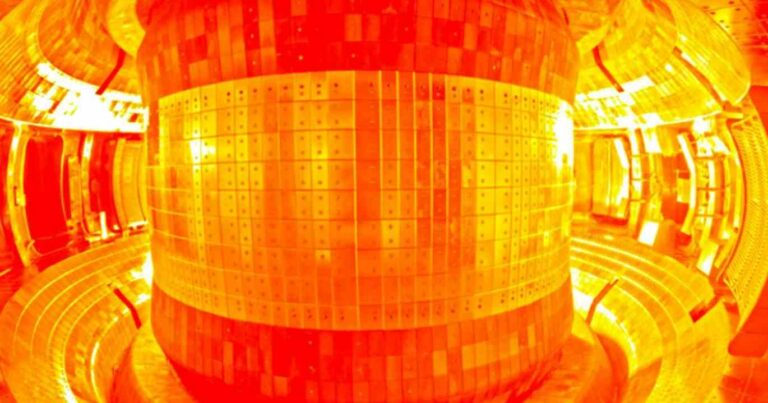Novel Plasma Escape Mechanism May Shield Fusion Vessels from Overheating
Researchers at the U. S. Department of Energy’s (DOE) Princeton Plasma Physics Laboratory (PPPL), Oak Ridge National Laboratory, as well as the ITER Organization (ITER) have established that the furious exhaust heat provoked by a fusing plasma in a commercial-scale reactor is not as destructive to the vessel’s innards as was once presumed.
“This discovery shifts understanding of the behavior of heat and particles between two critical areas at the edge of plasma during fusion fundamentally,” added PPPL Managing Principal Research Physicist Choongseok Chang, who supervised the work of his team. Further information about their work was published in the Nuclear Fusion journal, and there were some others papers that describe their studies.
To achieve fusion temperatures within the doughnut shaped vessel that house the plasma has to rise beyond 150 million degree Celsius. That’s ten times hotter than the center of the Sun, also known as Sol. It is difficult to contain something that hot even when the plasma is kept away from the inner walls with the use of magnetic fields. [Those fields] confine most of the plasma in the center of the vessel, forming a ring like a doughnut.
Some particles and heat never getting trapped within the plasma and instead they hit a material in front of the plasma. Recent research work carried out by the PPPL team indicates that particles exiting from the core plasma within a tokamak have a densely packed area of the tokamak’s wall which they do not harm as energy was earlier feared.
Physics and experiments from today’s modern tokamaks used in previous studies indicated that exhaust heat conveys itself to very slim strip of the tokamak wall surface or the divertor plates. As an important component of a tokamak, the divertor is responsible for cooling exhaust heat and particulate matter arising from the burning plasma.

“If all of this heat hits this narrow area, then this part of the divertor plate will be damaged very quickly,” said Chang, a PPPL Theory Department worker. “It could mean frequent stretches of downtime Even if you are just replacing this part of the machine it’s not going to be quick. ”
The issue has not prevented the continued operation of other less powerful tokamaks that will not be needed for a commercial reactor. However, over the past few decades there has been much concern that a commercial scale device would produce plasmas which are so dense and hot that the divertor plates could be eroded. Another plan that has been proposed involved injecting contaminants to the edge of the plasma to emit the energy of the escaping plasma thus diminishing the number of damaging heat on the divertor material but Chang said this plan is still difficult.
Simulating the escape route
And so Chang decided to find out how the particles were getting out, and where on an implement such as ITER – the multinational fusion project being constructed in France – the particles would impact. In this regard, his group developed a plasma simulation that would use a computer code referred to as X-Point Included Gyrokinetic Code (XGC). This code is one of many that has been encoded and is operated by PPPL in order to conduct research related to fusion plasmas.
The motion of the plasma particles across the magnetic surface was depicted on the simulational model, and it aimed to highlight what the researchers tried to interpret as the boundary between the confined plasma and the unconfined plasma, including that in the divertor region. This boundary of the magnetic field, created by the influence of external magnets, is called the last confinement surface.
In this visualization, one can see how the pedestal plasma moves across the white dashed lines which used to separate the pedestal plasma from the divertor plasma. The orange and yellow colors represent the plasma part. Credit: Dave Pugmire and Jong Youl Choi / Oak Ridge National Laboratory
Twenty years ago, Chang and his co-workers discovered that charged particles called ions were traversing this barrier and striking the divertor plates. They later realized that these escaping ions were concentrating the heat load on a very thin layer of the divertor plates.
A few years ago, Chang and his co-workers pointed out that the plasma turbulence can enable the negatively charged particles, the electrons cross the last confinement surface and broaden the heat load by 10 times at the divertor plates in ITER. Nevertheless, the simulation retained an essential assumption that the last confinement surface was not affected by the plasma turbulence.
“In the new paper, we prove that even there is no interference from external coils and visible plasma instabilities, the last confinement surface is significantly affected by the plasma turbulence during fusion,” explained Chang. Homoclinic tangles are the crazy, turbulent magnetic surface disturbance that do not allow the existence of a good last confinement surface.
Rather, Chang pointed out that the simulation revealed that electrons link the edge of the primary plasma to the divertor plasmas. The path of the electrons as they follow the path of these homoclinic tangles expands the heat strike zone by thirty percent than the earlier anticipated width by turbulence alone.
He said, “As a result, when the impurity injection in the divertor plasma radiatively cools the electrons and simultaneously precludes divertor surface damage due to the exhaustion heat, the research also revealed that the turbulent homoclinic tangles reduce the abrupt instabilities at the edge of the plasma and thereby reduces the driving force. ”
“One should never rely on the last confinement surface in a tokamak,” Chang said. “However, it may increase fusion performance by reducing the possibility of divertor surface damage in steady-state operating conditions and by removing the transient increase in energy of plasma at the divertor surface due to abrupt edge plasma instabilities, which are two of the major concerns affecting performance in future commercial tokamak reactors. ”
Reference: C.S. Chang et al, Role of turbulent separatrix tangle in the improvement of the integrated pedestal and heat exhaust issue for stationary-operation tokamak fusion reactors, Nuclear Fusion (2024). DOI: 10.1088/1741-4326/ad3b1e
Do not forget to share your opinion with us to provide you with the best posts !




0 Comments